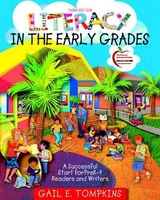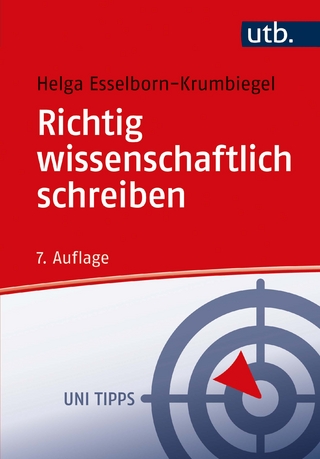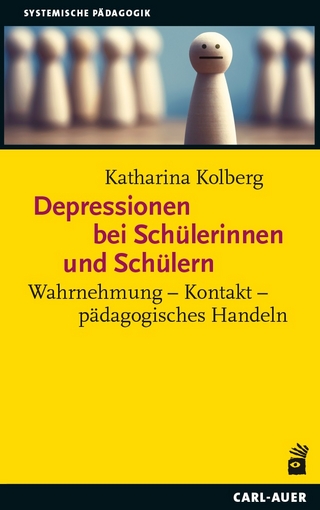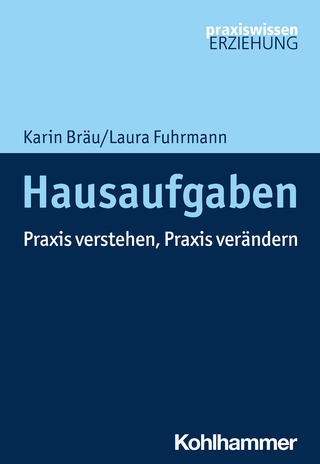
Literacy for the 21st Century
Teaching Reading and Writing in Pre-Kindergarten Through Grade 4
Seiten
2006
|
2nd edition
Pearson (Verlag)
978-0-13-227721-1 (ISBN)
Pearson (Verlag)
978-0-13-227721-1 (ISBN)
- Titel erscheint in neuer Auflage
- Artikel merken
Zu diesem Artikel existiert eine Nachauflage
This book distills the information from the k-8 literacy text Literacy for the 21st Century, focusing specifically on literacy learners from pre-kindergarten through grade 4. What are the specific needs of these students? How can you predict early literacy difficulties and how best can you scaffold your instruction to prevent reading difficulties in the future? How are the PK student’s needs different from the older, primary grades student?
FEATURES:
Chapter opening vignettes-Contextualize chapter concepts in an authentic classroom, complete with photos, dialog, and samples of student work to model excellent classroom teaching and prepare readers for the classrooms in their future.
Spotlights-In-depth look at a single student, peppered through chapters. Helps to detail literacy development and teacher decision making, one student at a time.
Guideline features-Offer specific guidelines for implementing chapter concepts in the PK-4 classroom.
Minilessons--offer ready to use skill and strategy instruction presented specifically for use in PreK-4 reading and writing classrooms. Find how the minilessons correlate to state and national standards on the text’s Companion Website.
The Compendium of Instructional Procedures --a robust resource of instructional methods designed to get teacher candidates up and running quickly in their first literacy classroom. The easily accessible Compendium at the back of the book offers clearly articulated instructional methods, an invaluable resource and quick reference.
Assessment Tools --highlight the complete chapter on assessment and provide future teacher candidates with the means to evaluate their students’ progress in early literacy. They'll also find ideas for alternative assessment
FEATURES:
Chapter opening vignettes-Contextualize chapter concepts in an authentic classroom, complete with photos, dialog, and samples of student work to model excellent classroom teaching and prepare readers for the classrooms in their future.
Spotlights-In-depth look at a single student, peppered through chapters. Helps to detail literacy development and teacher decision making, one student at a time.
Guideline features-Offer specific guidelines for implementing chapter concepts in the PK-4 classroom.
Minilessons--offer ready to use skill and strategy instruction presented specifically for use in PreK-4 reading and writing classrooms. Find how the minilessons correlate to state and national standards on the text’s Companion Website.
The Compendium of Instructional Procedures --a robust resource of instructional methods designed to get teacher candidates up and running quickly in their first literacy classroom. The easily accessible Compendium at the back of the book offers clearly articulated instructional methods, an invaluable resource and quick reference.
Assessment Tools --highlight the complete chapter on assessment and provide future teacher candidates with the means to evaluate their students’ progress in early literacy. They'll also find ideas for alternative assessment
Part I: How Do Children Learn to Read and Write?
1. Becoming an Effective Teacher of Reading
2. Examining Children's Literacy Development
3. Assessing Children's Literacy Development
Part II: What are the Components of Literacy Instruction?
4. Breaking the Alphabetic Code
5. Learning to Spell
6. Developing Fluent Readers and Writers
7. Expanding Children's Knowledge of Words
8. Guiding Children's Comprehension: Reader Factors
9. Guiding Children’s Comprehension: Text Factors
Part III: How do Teachers Organize Literacy Instruction?
10. Scaffolding Children's Reading Development
11. Scaffolding Children's Writing Development
12. Integrating Reading and Writing into Thematic Units
Part IV: Compendium of Instructional Approaches
| Erscheint lt. Verlag | 5.7.2006 |
|---|---|
| Sprache | englisch |
| Maße | 203 x 254 mm |
| Themenwelt | Schulbuch / Wörterbuch |
| Sozialwissenschaften ► Pädagogik | |
| ISBN-10 | 0-13-227721-2 / 0132277212 |
| ISBN-13 | 978-0-13-227721-1 / 9780132277211 |
| Zustand | Neuware |
| Haben Sie eine Frage zum Produkt? |
Mehr entdecken
aus dem Bereich
aus dem Bereich
Wissenschaftssprache in Regeln und Übungen
Buch | Softcover (2022)
UTB (Verlag)
15,00 €



